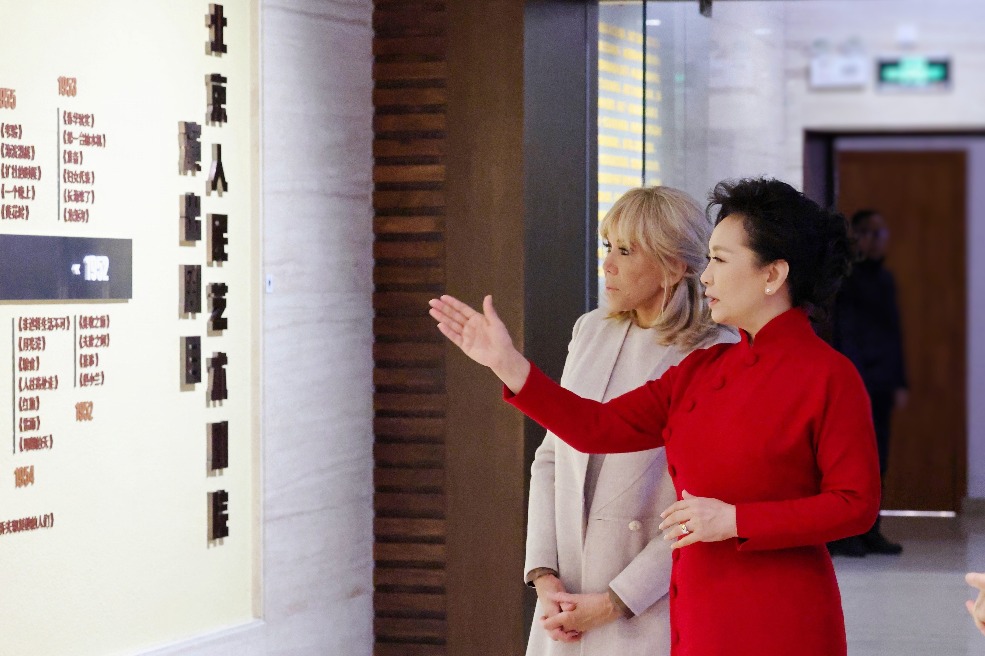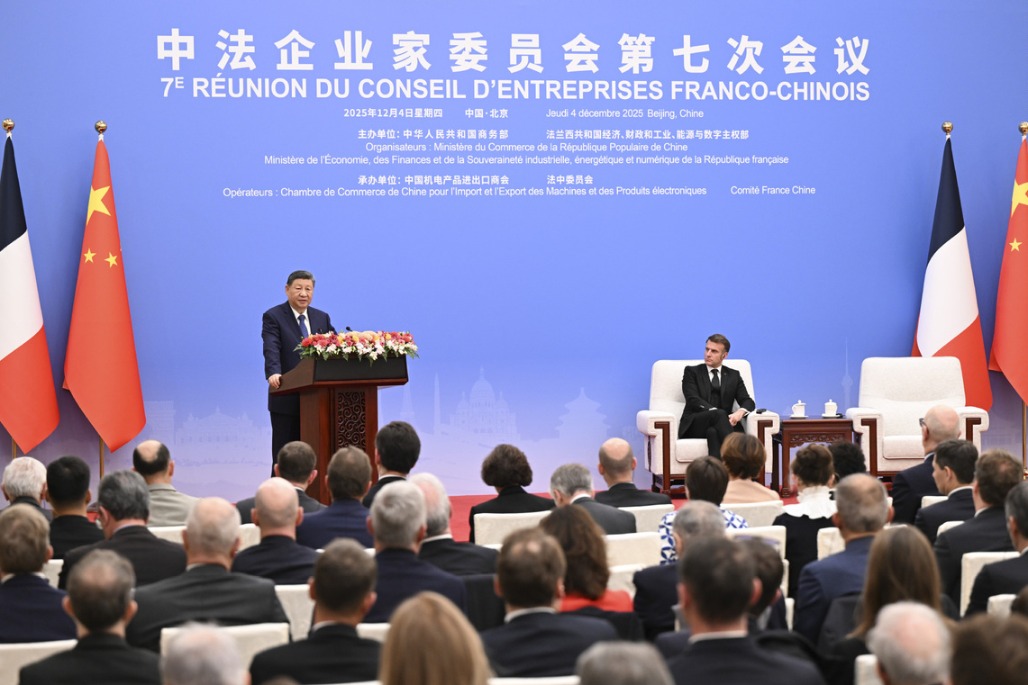Experts mull what impact lifting some China tariffs will have
By HENG WEILI in New York and YIFAN XU and ZHAO HUANXIN in Washington | China Daily Global | Updated: 2022-07-06 10:13
While a small portion of the US tariffs on Chinese goods could be removed soon, a massive number would remain in place, according to a published report, and experts weighed in on the news.
President Joe Biden could remove tariffs on just $10 billion worth of Chinese goods, according to Politico.
Former president Donald Trump imposed tariffs on approximately $370 billion worth of imports from China, starting in 2018.
The first phase of a mandatory four-year review of the tariffs by the Office of the US Trade Representative (USTR) concluded at midnight Tuesday.
The White House is likely to announce its tariff decision this month, according to three industry officials and former federal officials with knowledge of the administration's plans, Politico reported.
The administration has been trying to balance tackling surging inflation, which the lifting of tariffs could ease, with the realities of opposition by labor unions and Washington politicians pushing for a hard line on China.
"These tariffs punished the American people, especially lower-income Americans, and did nothing to return jobs to the United States," Stephen Orlins, president of the National Committee on United States-China Relations, told China Daily. "The tariffs did force some manufacturers to leave China and go to third countries. China's loss was not America's gain, and the additional costs of these moves was often paid by the American consumer.
"Since President Biden's election, I have advocated for both governments taking small steps to improve the trajectory of US-China relations. The removal of tariffs, even only some tariffs, will constitute one of those small steps," Orlins said.
Sourabh Gupta, a senior fellow at the Institute for China-America Studies (ICAS), told China Daily: "The Biden team continues to lack an internal consensus on the tariff issue and is hence adopting a 'split the difference' approach by pulling back on a subset of tariffs. This is a far-from-satisfactory approach."
Gupta said the fact that the administration was facing a four-year statutory deadline was "the most important driver of the debate internally within the administration. Had this deadline not been in place, the tariffs would not have been reviewed before the midterm elections.
"The thinking is that spiraling pocketbook expenses of the average American can be brought down by releasing the tariff valve. This is true up to a point," Gupta said.
In a social media post Tuesday, Bill Bishop, author of the Sinocism newsletter and co-founder of CBS MarketWatch, wrote: "Just $10 billion worth of Chinese goods...what is the point? a milquetoast compromise that just makes Biden look weak and indecisive, and it took them 17 months to argue to this."
Douglas H. Paal, distinguished fellow of the Asia Program at the Carnegie Endowment for International Peace, told China Daily: "Common sense argues that the US is not acquiring leverage against China by continuing tariffs that largely raise prices for American industry and consumers. That, plus inflation, is a strong argument."
Doug Barry, vice-president of communications and publications for the US-China Business Council, told China Daily that "businesses would like to see all Trump-era tariffs removed. The tariffs haven't worked as contemplated and have been costly for US businesses and consumers.
"We hope that both governments will redouble efforts to negotiate solutions to other trade and investment problems and concerns. There is much to discuss," Barry said.
Suzanne Clark, US Chamber of Commerce president and CEO, wrote in an op-ed Friday in Barron's: "The case for tariff relief is strong: It can help counter soaring inflation, provide relief to families struggling with high prices, and shore up the competitiveness of US manufacturers. What are we waiting for?"
The US tariff approach is expected to include three parts, according to Politico.
First, a narrow set would be lifted, likely on consumer goods such as bicycles. Second, the administration is expected to announce that the USTR will open a new exclusion process for companies to receive exemptions from the tariffs.
The USTR earlier this year awarded exemptions on more than 350 types of Chinese imports, but companies and pro-free trade lawmakers have pushed the agency to award more. Third, the administration will start a new investigation under Section 301 of the 1974 Trade Act. It will review sectors of the Chinese economy that are government subsidized.
Trump imposed the duties in four tranches over a year and a half. He set a 25 percent tariff on an initial $34 billion worth of Chinese goods on July 6, 2018, and went after another $16 billion with the same rate on Aug 23, 2018.
In the following months, Trump responded to China's reciprocation to his tariffs by imposing a 10 percent duty (later raised to 25 percent) on another $200 billion worth of Chinese goods. The next year, Trump hit an additional $120 billion worth of imports with a 7.5 percent tariff. Tariffs proposed on another large group of Chinese goods were never imposed.
As of June 8, the US had collected more than $140 billion worth of duties on Chinese goods as a result of Trump's actions, raising costs for American businesses and consumers, Politico reported.
The USTR set two deadlines for tariff extension requests: July 5 and Aug 22. As of late Monday, the USTR had received 263 submissions for the request period ending Tuesday, and 64 for the period ending Aug 22, according to Politico.
Gupta, of ICAS, sees the tariff standoff as a pivotal moment in Sino-American relations. He said that the tariff imposition in 2018 "literally kicked off the downslide in US-China ties. Future historians will mark the Section 301 tariffs as the first major blow in the US-China 'strategic contest' during the first half of the 21st century.
"As such, the imposition of the tariffs continues to have an outsized political significance. And … their impending part- removal, too, is a politically salient moment in the US-China bilateral relationship," he said.
























